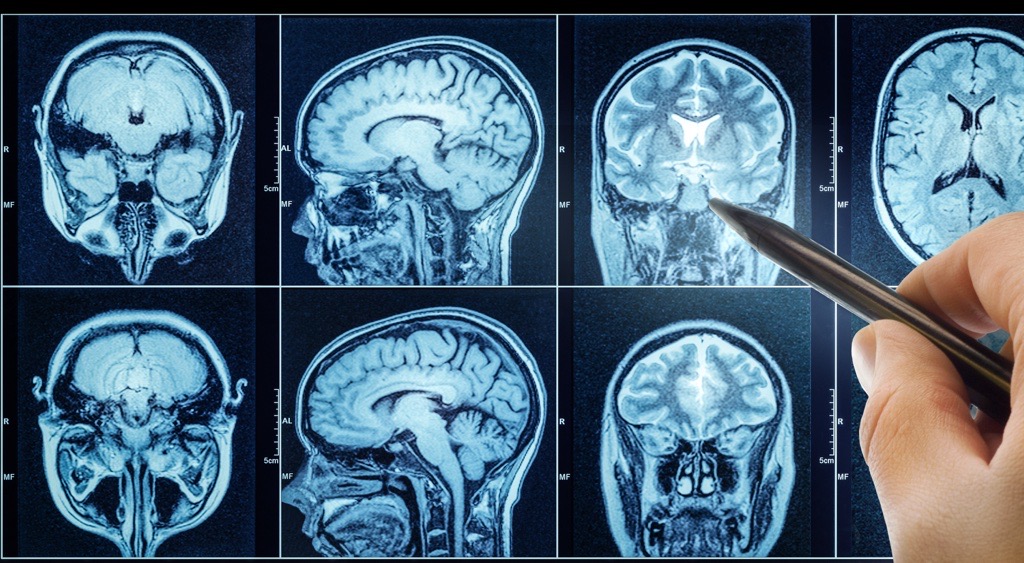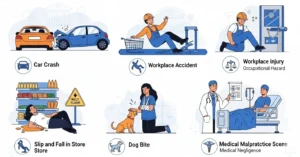
- TLMC SEO
- Personal Injury
Suffering a catastrophic injury on the job can instantly change the course of a person’s life. In Indianapolis, workplace accidents involving construction sites, delivery vehicles, or industrial equipment often led to severe injuries such as spinal damage, traumatic brain injuries, or amputations. After such an event, victims and their families face not only the challenges of medical recovery but also confusion about their legal rights and financial options.
While many people assume that workers’ compensation is their only recourse, some catastrophic work-related injuries also qualify for personal injury claims. Understanding the distinction between these two paths is crucial for ensuring that victims receive full compensation for their losses.
What Is a Catastrophic Workplace Injury?
A catastrophic injury is any injury that causes permanent disability or prevents the victim from returning to meaningful employment. Common examples in the Indianapolis workforce include:
- Traumatic brain injuries (TBI)
- Spinal cord injuries leading to paralysis
- Severe burns and disfigurement
- Amputations caused by machinery
- Crush injuries and multiple fractures
- Severe internal organ damage
These injuries often require extensive rehabilitation, lifelong medical care, and adjustments to living conditions. For victims and their families, the financial impact can be overwhelming.
The Basics of Indiana Workers’ Compensation
Indiana law requires most employers to carry workers’ compensation insurance. This system is designed to provide benefits to employees injured in the course of their work, regardless of fault. However, it comes with significant limitations.
What Workers’ Compensation Covers
- Medical Expenses: All reasonable and necessary medical treatment related to the injury.
- Temporary Total Disability (TTD): A percentage of lost wages while the employee cannot work.
- Permanent Impairment Benefits: Compensation for lasting physical loss or impairment.
- Vocational Rehabilitation: Assistance in retraining or finding suitable employment.
Limitations of Workers’ Compensation
While helpful, workers’ compensation has strict boundaries:
- It does not cover pain and suffering.
- Benefits are capped and may not reflect lifetime costs.
- Victims cannot sue their employer directly in most cases, even if the employer was negligent.
As a result, catastrophic injury victims often find that workers’ compensation alone does not provide enough financial relief.
When a Personal Injury Claim May Apply
In certain circumstances, an injured worker in Indianapolis can pursue a personal injury lawsuit in addition to or instead of a workers’ compensation claim. This usually occurs when a third party someone other than the employer- is responsible for the injury.
Examples of Third-Party Liability
- Defective Equipment or Machinery: If a manufacturer’s faulty design or lack of safety features caused the accident.
- Negligent Subcontractors or Vendors: On construction sites, multiple companies often share responsibility for safety.
- Vehicle Accidents: Delivery drivers or contractors injured in crashes caused by another motorist can pursue personal injury claims.
- Unsafe Property Conditions: If a worker was injured on a property managed by another entity that failed to address hazards.
These claims enable victims to seek full compensation, including pain and suffering, as well as other damages not covered by workers’ compensation.
Comparing Workers’ Compensation and Personal Injury Claims
|
Feature |
Workers’ Compensation |
Personal Injury Claim |
| Fault Requirement |
No proof of fault required |
Must prove negligence or fault |
| Type of Damages |
Medical bills, partial wage replacement, limited benefits |
Full compensation, including pain, suffering, and future losses |
| Right to Sue Employer |
Not allowed (except in rare cases) |
Only against third parties |
|
Compensation Limits |
Based on statutory formulas |
Determined by jury or settlement value |
|
Emotional Damages |
Not covered |
Fully recoverable |
Understanding these differences helps catastrophic injury victims identify when a personal injury claim may significantly increase their total recovery.
Proving Negligence in a Third-Party Claim
When pursuing a personal injury claim after a workplace accident, the injured party must establish negligence. This involves proving that:
- The third party owed a duty of care (for example, a manufacturer must design safe equipment).
- That duty was breached through careless or reckless behavior.
- The breach directly caused the injury.
- The injury resulted in measurable damage, such as medical expenses or loss of income.
Vaughn A. Wamsley’s legal team thoroughly investigates each case to determine whether a third-party lawsuit is appropriate and how it can supplement workers’ compensation benefits.
Calculating Damages in Catastrophic Injury Cases
Catastrophic work-related injuries often result in lifelong expenses. Compensation through a personal injury claim may include:
- Current and future medical care
- Long-term rehabilitation and therapy
- Prosthetics and adaptive equipment
- Home and vehicle modifications
- Lost earning capacity
- Pain and suffering
- Emotional distress and loss of enjoyment of life
For victims with permanent disabilities, these damages can reach millions of dollars over a lifetime. An experienced attorney ensures that all future needs are fully accounted for before accepting any settlement.
Coordinating Workers’ Compensation and Personal Injury Claims
In many cases, victims can receive workers’ compensation benefits while pursuing a personal injury claim against a third party. However, this process requires careful legal coordination to avoid conflicts between claims and ensure maximum recovery.
For instance, Indiana law allows workers’ compensation insurers to seek reimbursement (called a lien) from personal injury settlements. Vaughn A. Wamsley carefully manages these interactions to protect his clients’ net recovery and prevent unnecessary reductions.
Why Legal Representation Is Essential
Navigating the complexities of both systems workers’ compensation and personal injury law—can be daunting. Catastrophic injuries often involve multiple insurance carriers, medical providers, and legal deadlines. Without skilled representation, victims risk missing opportunities for full compensation.
Vaughn A. Wamsley provides comprehensive guidance for Indianapolis clients by:
- Investigating all potential sources of liability
- Gathering evidence of negligence and unsafe conditions
- Consulting with medical and economic experts
- Managing communication with insurers
- Negotiating settlements and litigating when necessary
His goal is to ensure that every avenue for recovery is explored and that victims and their families have the necessary financial support to move forward.
Indiana’s Statute of Limitations
For most personal injury claims, Indiana law provides a two-year statute of limitations from the date of the accident to file a lawsuit. Workers’ compensation claims, however, have different filing deadlines and notice requirements. Acting quickly is critical to preserving rights under both systems.
Contact Vaughn A. Wamsley
If you or a loved one has suffered a catastrophic injury while working in the Indianapolis area, you may be entitled to far more than workers’ compensation alone can provide. Vaughn A. Wamsley helps victims pursue every available form of recovery, ensuring their medical and financial needs are met for the long term.
Visit ProtectYourRights.com or call the Indianapolis office to schedule a free consultation. You pay nothing unless compensation is successfully recovered on your behalf.



